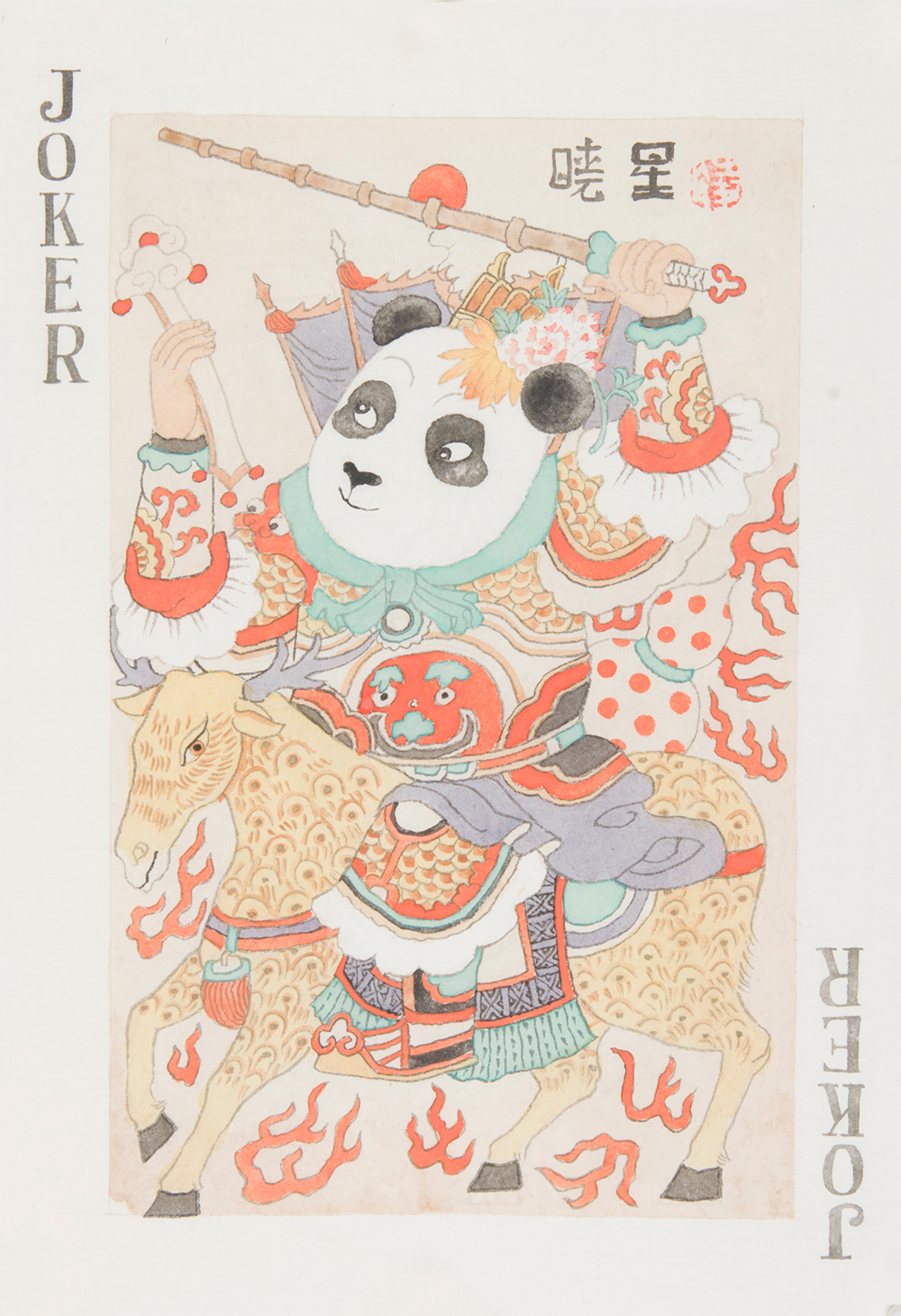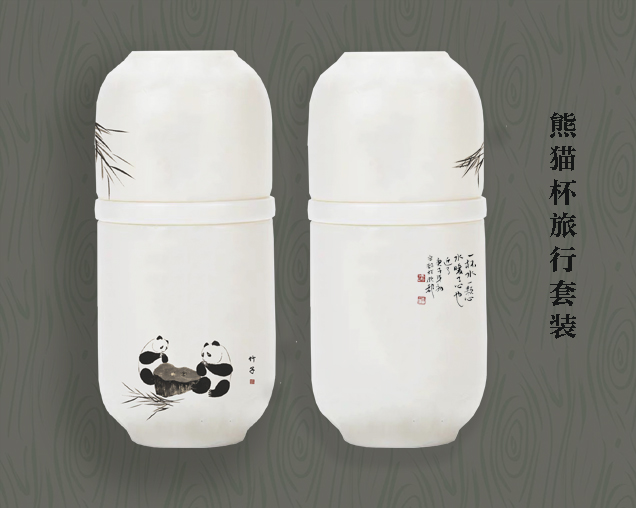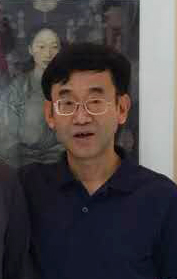冯斌为“杂烩川美”展览所写前言
时间:2008-02-11 | 来源:华夏艺术网 |
混杂与活力
冯斌
这一展览的缘起,还是07年4月的时候,李晓虎兄率一干人,为今日美术馆的“当代艺术院校大学生年度提名展”的宣传推广,风尘仆仆来到重庆、来到我们美院,走访了众多师生的工作室,很是有感于四川美术学院不同于他处的整体氛围和状态,于是“点题”两个内容:不一样的“中国画”和时下风头正盛的油画新人新作,今日美术馆拟以专题为展。我们的中国画有幸承蒙邹跃进老师不吝鼎助,批评批判就都交由他了。油画新人新作这一部分,就成了我脱不了干系的事。
起初李晓虎兄提出沿用我做过的“重庆辣椒”这一展览标题,我自己却顾虑于“重庆辣椒”这一展题有用得过滥之嫌。另外,川美近30年来持续不断地出了这么多的作品,也出了这么多人物,现在其势依然而且内容风貌多样,包括我们这次展览的作品,除了考虑以地理的、特产的词汇来表述外,还可如何涵括?
说其势依然,应该是有目共睹:无论从近一、二年来全国的各大展览和出版发表的书刊来看,抑或从拍卖场和艺术市场来看,出自川美或嫡出于此的艺术家和这些艺术家的作品,几乎是无处不在、无拍不有。而且就此还形成了两大特点:一是以画油画的构成了人多势众的群体性,二是连绵不断代有人出的持续性。除了功成名就的前辈,势之所及,还火到了画着油画的学生们。而油画的学生们,通过他们的作品自证着他们的继续成长。
我想在这里谈到我观察:前几年本科生、研究生毕业展览时,只是偶尔有人询问作品售价。而这一二年,大凡看了有印象的、也就是还算不错的作品,几乎都被一购而去。所以这一二年的学生毕业展览,虽然只是在重庆的学校里举办,却总有好些北京、上海和香港、台湾的画廊不远千里来“淘货”。学生们叫出的价格,从几年前的几千元,到现在已远不是这样的报价了;为“第三届成都双年展”遴选作品时,我曾走访了好几个美术学院,说实话,多少有些失望。虽然我在去之前就已经联系过,在有些美院却看不到几件学生的创作。而在川美,可以在学校里和周边看到无数的学生工作室,工作室里总有正在勤奋工作的学生,总有令人喜出望外的新作。比较下来,还真的觉得,不论是数量的多寡,还是创作的自主自觉的状态,川美学生的整体氛围,可谓是热火朝天。
被渲染得红红火火的“当代艺术”,在川美红火的就是绘画,特别是油画,而且主要是以写实性的方式画出来的油画。这也不能不说是中国当代艺术的一大奇观。在功成名就的前辈榜样引领下,油画新人们的继续成长,既有成功的参照无疑支撑了他们可能膨胀的向往,但心存欲念志在高远也促使了他们行为的主动。为了出人头地而你追我赶,自觉不自觉地形成了竞争进取的心态和状态。在客观条件上,川美封闭于重庆这样一个没有多少文化气息和文化共鸣的工业化山城,反而促成了心无旁骛,而学校里为数不少的画室,以及学校周遭越来越多的仓库、厂房纷纷被动或主动地出租成为艺术家的工作室,也为学生们提供了较其他城市、美院更好的条件,这也是川美很为另样的特色。再加上国内外的艺术机构、评论家、策展人、画廊、画商不时造访,川美真的就像一个产销对路的绘画作品的生产基地了。
但是,对油画新人来说,在成长中有着前辈的功名和既成样式的压力,只有另辟蹊径才能别开生面。好在这难不倒机敏灵巧的川美油画新人。以他们的聪颖和敏感,或许再加上一点投机(其实川美前辈就有想点子、出绝招的榜样和传统,所以影响所及也是自然),他们的作品更能迎合当下。在油画新人们的作品中,社会的、宏大的关怀肯定是消退了,但利用政治资源还是不少人的选择;社会和时代变迁以新的方式存在于他们的作品中:动漫卡通中成长的新人,于外恣意于青春的张扬,自发或造作地纵情于物质和消费的享乐;于内则耽于自我或其幻像。总的来看,作品体现出更多个人化的因素,个人思想、个人视角、个人表达,成为主要的支点。
从技术手法上来说,川美油画的写实性仍然是油画新人的首选,当然在方式上已非全然现实主义写实意义的形式了,而更多地依惯性借助拿手手段,用图像化来营造或隐喻想要表达的意思。在其中,也不乏执意油画本体语言表现的,或借取其它绘画资源来表现的,或干脆另寻他途采用抽象手法的,但他们在数量上只可计为川美油画的异数。川美油画新人作品内容庞杂、风貌各异,充分体现了其丰富和多样性,而油画新人作品的品质和发展的连续性,更是我遴选时甚为看重的要素。在这一点上,川美油画新人的作品确实是被广泛看好的,包括市场。从他们作品表现的主题、表达的方式以及最终的画面效果,川美油画新人的作品,恰恰投合了中国当代社会变迁和文化潮流。所以市场的追捧也只是在当下中国蓬勃兴盛的艺术市场中利之所在、势之所趋而已。对油画新人来说,虽然不免有造成他们急功近利浮躁表面之嫌,事实上,已经有这样批评的声音和看法了。但是艺术作品要排斥市场也是不足为取和不可能的。市场对学生新人来说,可以给他们肯定和自信的助力,同时也很好地解决了他们生存的后顾之忧。其实古今中外的艺术家,不都是凭借市场才得以功成名就?但对学生新人们的问题是如何面对市场、把握自己,这是他们成长中的必然经历,也是一道必须要自己去迈过的坎。
为什么川美总是新人辈出?以我近30年在川美的经历和零距离的感知来说,我把这种持续的整体性状态归结为于外于内的两大主因:于外,重庆虽然没有文化敏感度,但川美所在的黄桷坪却有它无知中的宽容,而黄桷坪工厂、码头、农村,各色人等鱼龙混杂,造就了生动鲜活的景象,正好容纳了想求自在的艺术家和学艺术的学生们。于内,川美没有多少大树可以乘凉,前人在文革后成就的历史就是争先恐后各自发奋努力的历史,所以也就形成了相对自由和宽松的风气,虽然有些混杂无章,起码有了野生野长的环境,所以也就容纳了肆意野长的个人。而川美持续整体性的生生不息,正是源于一个个的个人的竞相生长。但近些年来形式主义的评估等中国大学学术官僚化程式化之弊正在慢慢地消蚀着这样的景象。不过眼下的川美,感觉还主要是非程序化的混杂,在与黄桷坪的地缘混杂中充满活力。
“杂烩”,是我对凡此种种所想到的词汇。杂烩一义可解为混杂,如曰“大杂烩”;另一义可名一道川菜,如“XX杂烩”。在此“杂烩”为题,是兼其二义,既以充满活力的混杂涵括川美之现象,亦是就此奉上一道新人新作的新鲜菜,而且还是川菜。
一个展览说来容易做起来难,过程中的温凉甘苦亦就不足为道了。在这一展览终成之时,首先要感谢参加展览的同学们,是他们提供了自己品质优秀的作品,才有了这次几可概括川美油画新人全貌的整体展现,他们为这一展览作出了最大的贡献。感谢邹跃进老师成全鼎助。感谢今日美术馆主办了这一展览,感谢今日美术馆张子康先生、李晓虎先生和李小倩女士,以及骆阿雪、蔡婷婷等谋面或未曾谋面的今日美术馆协作这一展览的同仁。感谢其实与重庆和川美都没有一点干系的邓鸿先生承应以成都现代艺术馆的名义协办了这一展览。还要感谢刘涛,他为协助这一展览的策划和组织工作付出了大量心力。
2007年12月岁尾
于重庆黄桷坪
Mixture and Vitality
by Feng Bin
The idea of the exhibitions started in April 2007 when Mr. Li Xiaohu led his promotion team for the 2007 Collection of Today Art Student Annual Art Awards all the way to Chongqing and to Sichuan Fine Arts Institute. Having visited many a studios of the teachers and students, Xiaohu was so amazed at the artists’ working enthusiasm and the general atmosphere which was so different from other places, that he asked for two exhibitions on the spot, one to be new Chinese Painting of mine and my postgraduate students and the other the emerging artists of oils who are just in the spotlight. For the part of Chinese Painting, we are honored to have Prof. Zou Yuejin as the curator. For the part of the emerging artists of oils, I had reason to decline.
Xiaohu first proposed to entitle the exhibition Chongqing Chilis, which was the title of the exhibition I curated for the artworks by teachers and students of the Institute. However, I felt the title a bit overused. For 30 years Sichuan Fine Arts Institute has been generating a large number of outstanding artists and artworks. It is still the case till now. Except vocabulary of geographic concept and local specialty, what other words can I use to describe the achievements and diversities?
The achievements are obvious. No matter in regard of major nationwide exhibitions, or of publications, or of auctions and art market, artists of Sichuan Fine Arts Institute and those graduated from the Institute have been almost any time anywhere in recent years. And this group is featured for its number and continuation: a large number of artists of oils and continuing production of talents from generation to generation. The forerunners are fulfilled, now it comes to the young students of oils. They are striving to grow up, as is manifested in their works.
I would like to list two phenomena I observed. Several years ago at the graduation exhibitions of graduates and postgraduates alike, it was only occasional that the works were inquired if on sale or not. However, in recent years, the “not bad” works are taken away---they do not even have to be impressive. Though faraway in Chongqing, the exhibitions are not lack of treasure finders from galleries in Shanghai, Beijing, Hongkong and Taiwan. The prices the students ask for boost from thousands RMB to what it is now. In 2007, I visited several art academies for selecting works for the 3rd Chengdu Biennale. To be honest, I was kind of disappointed. Though informed of my purpose in advance, I could find few students’ creations. In contrast, in Sichuan Fine Arts Institute, one can find numerous students’ studios, where there are always someone working diligently, where you always find surprises. As far as the quantity of works, and the consciousness and willingness to create are concerned, the students of Sichuan Fine Arts Institute are certainly in full swing.
Contemporary art that is said to be flourishing in China means painting art in Sichuan Fine Arts Institute, oils in particular, and mostly oils painted in realistic techniques. I have to admit it is a spectacular scene in contemporary Chinese art. Exemplified by the achievements of their predecessors, the growth of the young artists of oils is motivated by their ambitions as well as their longings to succeed in the reference of that of their teachers. In order to stand out among fellow students, they consciously or unconsciously put themselves in a competitive state. As the objective condition is concerned, Sichuan Fine Arts Institute is enclosed in Chongqing, an industrial mountain city with not much humanistic concerns and cultural resonance. This unexpectedly results in the students’ full concentration on their art. Besides, the school provides a large number of studios for the students. The warehouses and factories around the school are rented out as the students’ studios. In this aspect, the students are better equipped with an advantage over the other cities or art academies. Additionally, with the frequent visits of art organizations from home and abroad, critics, curators, galleries and art dealers, Sichuan Fine Arts Institute is like a manufacturing base producing paintings just right for sale.
However, the young artists are facing the pressure brought by the success of their forerunners. They must open up their own field. Fortunately, this will not baffle the smart and highly sensitive young artists. With their acuteness and some trickeries, (which is also a tradition of Sichuan Fine Arts Institute), their objects go along well with contemporary life. It is expected not to find general social concerns in the works of the young artists, though political resources are a frequent choice. Changes of time and society exist in works in other ways: as a generation growing up in cartoons and comics, they either indulge in their youth and material and consumptive entertainment, or in their egos and illusions. In a word, they construct their works with personal elements: personal ideas, personal perspectives and personal expressions.
Technically, realistic skills are the primary application in the oils in Sichuan Fine Arts Institute, though certainly not in the form of Socialist Realism, but to build up or create metaphors of their ideas with images depending on familiar means. Among them, some stick to the expressiveness of the oil language itself; others borrow different painting resources, and still others find their way out in abstract methods, though the number is small and they look like alternatives of Sichuan Fine Arts Institute. The contents and styles of the works of the young artists of oils in Sichuan Fine Arts Institute vary greatly, yet I paid more emphasis on the quality and development when selecting works for this exhibition. And it is just on this point that their works receive good recognition, including that from the market. The subject matters of their works, the ways of expressions and the final effects accurately reflect the social changes of China today and well get along with the cultural trends. The market follows profits, particularly when the art market is flourishing today. People may have good reasons to question the young artists’ motivation for quick success and instant benefit, (in fact, there has been such criticism), however, it is not advisable and probable to reject the market. The young artists can find recognition and confidence in the market and free themselves from surviving problems. In history as well as at present, market has benefited numerous artists. To the students of oils, the key is to be themselves when facing the market. This is what they have to experience in their growing, a question to which they need to find the answers by themselves.
Why is Sichuan Fine Arts Institute never lack of young artists emerging from nobody? I have been working in the Institute for almost 30 years. From my close observation, I owe the phenomenon to two reasons. Outwardly, though Chongqing is not culturally sensitive, Huang Jueping, where Sichuan Fine Arts Institute locates has its ignorant tolerance. Factories, harbors and farms are mixed with one another. People of all kinds are mixed with one another. The vivid life well accommodates artists and art students who seek freedom. Inwardly, self-reliance is a tradition of the Institute. The history of the forerunners’ way to success was stories of self-reliance and full efforts. This provides a relatively free and relaxing atmosphere for personal development. Chaotic is may seem, it at least provides a wild environment for the wild growing of an artist. And the competition between each other ensures incessant producing of artists in large numbers. However, the bureaucratic stereotypes in Chinese universities, to mention formalist assessment of universities as one example, are dispelling the vitality, which we should be on the alert.
“Mixture” is the word related to all above discussed that came to me. “Mixture” means “blending”. It is also a common suffix to Sichuan dishes meaning hotchpotch. To entitle the exhibition with “Mixture”, I would like to use both of the meanings: to describe the vitality of Sichuan Fine Arts Institute brought by the mixture of Huang Jueping, and to serve a fresh dish made of the emerging artists and their works. It is genuine Sichuan cuisine.
It is easier said than done. This is equally true to an exhibition. When all the works are finally exhibiting here, my thanks first go to all the participating students who provided their best works that makes the exhibition possible. Thanks to Prof. Zou Yuejin who gives us all his help and support. Thanks to Today Art Museum who supports the exhibition and Mr. Zhang Zikang, Mr. Li Xiaohu and Ms. Li Xiaoqian, and Luo Axue, Cai Tingting whom I met or not yet, who coordinated the exhibition. I am also debted to Mr. Deng Hong who co-supported the exhibition in the name of Chengdu Contemporary Art Museum, but actually has nothing to do with Chongqing or Sichuan Fine Arts Institute. At last but not the least, my special thanks to Liu Tao for his assistance in curating and organizing the exhibition.
Dec. 2007
Huang Jueping, Chongqing
>相关报道:
- ·痴迷书法 甘之如饴——书法家王远之其人其书[2021-07-27]
- ·关于爱的美学随笔 罗国正[2019-06-19]
- ·用美学与公益结合的维度去看: 人类活动有四条重要规律 罗国正[2019-04-20]
- ·形神兼备 雅俗共赏——品读孟超花鸟画艺术[2019-01-30]
- ·中有风雷老将心:西沐先生艺术经济建构随想[2019-01-17]
- ·非遗传承人——唐卡世家 仁青当周[2018-11-14]
热点新闻
艺术家推荐
更多...曹辉 1952年生于成都。中国美术家协会会员,国家一级美术师,四川美术家协会理事、四川美术家协会中国画艺委会人物画专委会特邀委员、成都中国画会副会长、成都大学中国东盟艺术学院客座教授,硕士生校外导师,成都惠民职工画院顾问。上世纪八、九十年代,其连环画作品多次获得全国大奖。1999年国画《川妹子出川图》获文化部全国第八届“群星奖”银奖;1990~1998年连续在法国举办五次个人作品展。2011年获第一届四川省工笔画学会作品展暨中国工笔画名家邀请展银奖。2014年作品《锦江花月夜》参加四川省诗书画院三十年创作成果展•全国书画名家作品邀请展。2015年作品参加在中国国家画院美术馆举行的“新中国美术家系列·四川省国画作品展”;2016年在四川美术馆举办个人作品展;2016年12月作品受邀参加“回望东坡“2016四川中国书画创作学术邀请展;2017年3月作品受邀参加水墨四川 ——名家作品邀请展;2017年5月作品《锦官城外》受邀参见“守墨鼎新”四川省政协书画研究院作品展;2017年8月作品《年夜饭》参加在香港会议展览中心举办的全球水墨画大展;2018年1月27日在香港云峰画苑总部举行“昔日情怀--曹辉艺术作品展”,并由此开始为期一年的全国巡展。 曹辉1982——2002年发表作品: 《神奇的武夷山悬棺》连环画《奥秘》画报 1982年4期 《给上帝的一封信》连环画《连环画报》 1983年3期 《神秘的大旋涡》连环画《奥秘》画报 1983年2期 《野人之谜新探索》连环画《奥秘》画报 1984年1期 《女子足球运动》连环画《奥秘》画报 1985年5期 《女子马拉松》连环画《奥秘》画报 1985年2期 《小酒桶》连环画《连环画报》 1984年3期 《神秘的石室》连环画《奥秘》画报 1984年4期 《战神之墙》连环画《奥秘》画报 1985年9期 《笔录奇观》连环画《奥秘》画报 1985年11期 《古代美容》连环画《奥秘》画报 1986年6期 《一个女研究生的堕落》连环画广东《法制画报》 85年1、2期 《一个投案者的自述》连环画广东《法制画报》 85年17期 《ET外星人》连环画《奥秘》画报 85年4、5期 《孟卖大爆炸》连环画《奥秘》画报 1987年5期 《热爱生命》连环画《奥秘》画报 1989年1期 《驼峰上的爱》连环画《奥秘》画报 1989年9期 《青鱼》连环画《连环画报》 1985年3期 《珍珠》连环画《连环画报》 1986年3期 《菩萨的汇款》连环画《连环画报》 1985年9期 《小耗子》连环画《连环画报》 1986年10期 《水手长接替我》连环画《中国连环画》 1986年10期 《征服死亡的人》连环画《中国连环画》 1987年6期 《小酒桶》 连环画中国农村读物出版社再版 1985年11版 《给上帝的一封信》 连环画中国连环画出版社再版 84年3期 《日本国技.相扑》 连环画《奥秘》画报 1986年1期 《圣地亚哥刑场》 连环画《奥秘》画报 1987年10期 《古诗意画》 国画 四川美术出版社 1987年5版 《人蚊之战》 连环画 科学文艺 1988年1期 《跳水 》 连环画 《万花筒画报》 1988年2期 《他们与“森林野人”》连环画《奥秘》画报 1988年3期 《圣地亚哥刑场》 选刊 《中国连环画艺术》 1988年3版 《关于圣地亚哥刑场的通信》 论文 《中国连环画艺术》 1988年3版 《阿拉斯加的奇遇》 连环画《奥秘》画报 1989年1期 《祭火》 连环画 《中国连环画艺术》 1989年6版 《辟古奇谭》 连环画《奥秘》画报 1989年6期 《玛丘皮丘》连环画《奥秘》画报 1989年9期 《医生.夫人.闹钟》连环画《奥秘》画报 1990年1期 《南.马特尔之谜》连环画《奥秘》画报 1990年10期 《泉神娶妻》连环画《奥秘》画报 1991年1期 《中国民族民俗故事》 连环画明天出版社出版 1991年1版 《船儿水上飘》 国画 蓉城翰墨 1991年12版 《萨克奇野人的俘虏》连环画《奥秘》画报 1991年10期 《圣经的故事》 连环画四川美术出版社 1992年1版 《雪莲洞探秘》连环画《奥秘》画报 1992年2期 《艾科沟之谜》连环画《奥秘》画报 1992年5期 《印度河文明之谜》连环画《奥秘》画报 1993年1期 《干冰杀人案》连环画《奥秘》画报 1993年5期 《白色幽灵》 连环画 《中国连环画》 1993年4期 《悬棺之谜新解》连环画《奥秘》画报 1993年8期 《冤家变亲家》连环画《连环画报》 1993年10期 《一棵遗落在荒原的种子》连环画《连环画报》 1994年6期 《世界名人传记.艺术家卷 米勒篇 》 连环画浙江少儿社 94年一版 《巴仑克之谜》连环画《奥秘》画报 1994年10期 《辟古奇尼》连环画《奥秘》画报 1995年5期 《豹狼的日子》 上、下连环画 中国连环画出版社 1992年10版 《冬之门 》连环画《中国连环画》 1995年8,9期 《神农架野人今安在》连环画《奥秘》画报 1997年1期 《寻觅玛雅古城》连环画《奥秘》画报 1997年10期 《白鹤梁探秘》连环画《奥秘》画报 1998年1期 《尊严》连环画《中国连环画》 1998年2期 《神秘的南美大隧道》连环画《奥秘》画报 1999年2期 《名医入地彀》连环画《连环画报》 1999年6期 《神秘的英国巨石圈》连环画《奥秘》画报 1999年5期 《蜀王陵出土记》 连环画《奥秘》画报 2000年8期 《定数》连环画《连环画报》 2000年10期 《印山大墓揭秘》连环画《奥秘》画报 2001年5期 《冰封印加之谜》连环画《奥秘》画报 2001年8期 《“狼人”之谜》连环画《奥秘》画报 2002年1期 《扣开通往远古的大门》连环画《奥秘》画报 2002年4期 曹辉艺术年表: 2020年1月在成都举办“陌上谁人依旧 · 曹辉民国风人物画展” 2019年11月作品受邀参加四川省诗书画院主办的“回望东坡•2019四川中国书画学术邀请展” 2019年8月中山(南区)云峰画苑于举办《昔日情怀-曹辉艺术作品展》 2018年10月作品受邀参见“天府百年美术文献展” 2018年1月27日在香港云峰画苑总部举行“昔日情怀--曹辉艺术作品展” 2017年8月作品《年夜饭》参加在香港会议展览中心举办的全球水墨画大展 2017年5月作品《锦官城外》受邀参见“守墨鼎新”四川省政协书画研究院作品展 2017年3月作品受邀参加水墨四川 ——名家作品邀请展 2016年12月作品受邀参加“回望东坡“2016四川中国书画创作学术邀请展 2016年6月 在四川美术馆举办个人作品展 2016年5月 作品《绣娘》参加成都重大题材美术创作工程开篇之作——南方丝绸之路美术作品展 2015年11月 作品《故园旧梦》入选第二届“四川文华奖”美术书法展,并获三等奖 2015年11月 作品参加由四川省艺术研究院主办的“2015四川中国画创作学术邀请展” 2015年10月 作品《西厢待月》参加在重庆举办的“中国精神•民族魂——中国知名画派邀请展” 2015年10月 作品《故园旧梦》参加“从解放碑到宽巷子”2015成渝美术双百名家双城展 2015年9月 作品参加成都市推广天府画派办公室主办的“传神写照•2015水墨人物画邀请展” 2015年8月 特邀参加成都市推广天府画派办公室主办的“心里画儿•中国画邀请展” 2015年5月 特邀参加由四川省美协和四川省美协中国画艺委会联合主办的“四川省中国画人物画作品展” 2015年4月 参加在中国国家画院美术馆举办的“新中国美术家系列•四川省国画作品展” 2014年 作品《锦江花月夜》参加四川省诗书画院三十年创作成果展•全国书画名家作品邀请展 2014年7月 三幅作品参加“南方丝绸之路”主题创作展 2011年5月 在成都东方绘画艺术院(现在的二酉山房)举办“曹辉人物画作品展” 2011年3月 《曹家大院•家训》获首届四川工笔画学会作品展暨中国工笔画名家邀请展银奖 1999年 国画《川妹子出川图》获文化部全国第八届“群星奖”银奖 1999年 连环画《名医入彀》获《连环画报》“十佳”优秀绘画奖 1998年8月 在法国圣雷米市BAYOL画廊举办第五次个展 1996年 作品《寻找北斗》获四川省优秀作品奖 1995年7月 在法国圣雷米市BAYOL画廊举办第四次个展 1993年9月 在巴黎“中国之家”画廊举办第三次个展 1993年 连环画《白色幽灵》获《中国连环画》“十佳”作品奖 1991年5月 在巴黎亚洲民俗艺术博物馆举办第二次个展 1990年3月 在巴黎亚洲民俗艺术博物馆举办第一次个展 1990年 连环画《圣地亚哥刑场》获《奥秘》画报1985~1990年“十佳”优秀作品奖 1989年 连环画《圣经的故事》《青鱼》入选第七届全国美展,获四川省优秀作品奖 1986年 连环画《罗瑞卿的青少年时代》获第三届全国连环画评奖三等奖 1981年 国画《新户头》获四川省优秀作品奖详情>>



 保存
保存 打印
打印



最新评论
已有0条评论,共0人参与